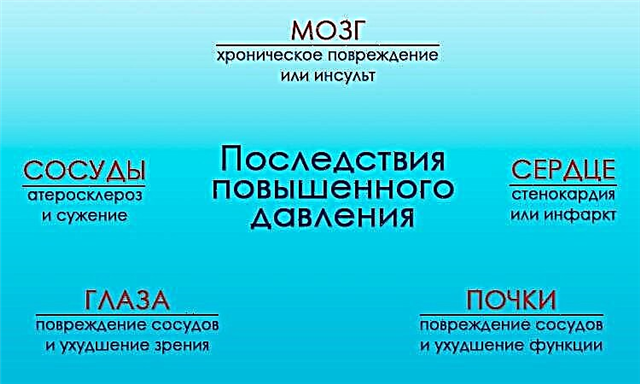Arrhythmias are often accompanied by diseases of the heart muscle. One of the options for rhythm deviation is ventricular tachycardia. As practice shows, often its cause is a heart attack or cardiomyopathy, and the result of a failure may be a violation of the movement of blood through the vessels, requiring urgent action.
What it is
Normally, the pacemaker of the heart, who sends impulses and regulates the contractions of the heart muscle, is located in the sinus node. From here, the excitement passes through the fibers and ensures the stable functioning of the heart. Sometimes this role is assumed by the structures of the conducting system located below - the atrioventricular junction (AV), the His bundle or Purkinje fibers. Ventricular tachycardia occurs when the distal (terminal) part of this system (below the AV node) becomes the pacemaker.
If you want to know everything about tachycardia, we advise you to watch the video below at the link. Causes, symptoms, diagnosis and signs that it is time to see a doctor - about all this in 7 minutes. Happy viewing!
Causes of occurrence
Most often, tachycardia develops due to myocardial ischemia, including cardiosclerosis after a heart attack or aneurysm formation. In addition, rhythm disturbance may appear in the following cases:
- dilated or hypertrophic cardiomyopathy;
- violation of the structure of the valves.
Other reasons:
- heart surgery;
- endocrine and neurological pathologies;
- changes in electrolyte balance;
- drug overdose (cardiac glycosides, beta-blockers, antiarrhythmic drugs);
- alcohol intoxication;
- drug use (cocaine).
Sometimes there is no organic cause of rhythm disturbance, but a person develops an ectopic (abnormal) focus of excitation in the myocardium. In this case, we are talking about an idiopathic type of deviation - that is, a disorder for no apparent reason. It can be paroxysmal or persistent. According to my observations, the second option has a more favorable course and responds better to treatment, especially with ventricular paroxysmal tachycardia.
Varieties
The following types of ventricular tachycardia are distinguished downstream:
- Paroxysmal. It can be stable (from 30 seconds or more) and unstable (less than 30 seconds).
- Chronic - with short recurring attacks. It can be constant or continuously recurrent.
By morphology:
- Monomorphic. ECG complexes have the same appearance, by the type of blockade of the right or left bundle branch.
- Polymorphic. Ventricular complexes have a different appearance and direction. Tachycardia of the "pirouette" type belongs to the same form (read more about it here), when an irregular rhythm is observed, and the group of QRS complexes that pops up on the cardiogram has a fusiform shape. An example of such a violation can be seen in the photo of the film below.
By the presence of manifestations:
- Asymptomatic. It does not manifest itself in any way and does not cause complaints.
- With symptoms. There are signs of heart failure, a decrease in pressure, pain and a feeling of tightness in the chest, fainting, headache, dizziness, nausea, weakness, shortness of breath, rapid pulse, a feeling of an irregular and / or strong heartbeat.
If ventricular tachycardia is detected, action must be taken. Changes in rhythm are dangerous by disturbances in blood flow, transition to fibrillation and aggravation of the condition against the background of ischemic heart disease.
ECG signs
Ventricular tachycardia on the ECG is detected as follows: expanded and deformed QRS complexes from 12 to 20 mm in length are recorded. The pulse is quickened, in the range of 100-180 beats / min. Bradycardia below 99 or tachycardia above 200 beats / min are rare.
The ventricles can begin to contract faster due to the instability of the focus of excitation, blockade at the exit from the site of ectopia, periodic impulses from the sinus node, and in case of large damage, the supraventricular rhythm is also turned on. Atrial P waves are rarely detected, in about 30% of cases. A typical cardiogram of such a patient is shown in the photo.
Symptoms of ventricular tachycardia with prolonged paroxysm:
- loss of consciousness;
- convulsions of the epileptoid type;
- dyspnea;
- pulmonary edema;
- collapse;
- shock.
After the restoration of the rhythm on the electrocardiogram, posttachycardial syndrome manifests itself for some time in the form of the appearance of a negative T wave and a decrease in ST below the isoline.
How to help
To treat ventricular tachycardia, I always start with determining its cause. Moreover, it is important to make every effort to eliminate it and prevent another exacerbation. These patients need to restore the rhythm to avoid complications. Recent studies show that many antiarrhythmic drugs do not work for life-threatening ventricular tachycardias.
Medicines
Medical treatment of ventricular tachycardia is carried out in a specialized hospital or clinic. To restore the physiological rhythm, the following are used:
- Beta blockers act as first-line drugs. They eliminate ectopic ventricular contractions and at the same time reduce the risk of developing other cardiac pathologies, prolonging the patient's life. However, they must be used with caution. The latest research data show that in patients over 70 years of age with hypertension and heart palpitations (110 and above), the use of beta-blockers increases the likelihood of death.
- "Amiodarone" belongs to the III class of drugs and has not only an antiarrhythmic effect, but also blocks calcium and sodium channels. It reduces myocardial oxygen demand and dilates the coronary vessels. It has been proven that it does not affect either the mortality rate or the survival rate.
- "Sotalol" actively suppresses the ectopic rhythm and simultaneously exhibits the properties of an alpha and beta blocker. Indicated for use in patients without signs of heart failure. It is used with caution in case of impaired renal function.
- With myocardial ischemia and the development of arrhythmia, ACE inhibitors, antiplatelet agents and statins are mandatory drugs. They reduce the likelihood of a second attack of ventricular tachycardia and complications in the form of thrombosis and re-development of a heart attack.
The combination of antiarrhythmic drugs ("Sotalol" and "Mexiletin", as well as "Amiodarone" and "Propafenone") makes sense only in the absence of positive results of monotherapy.
Urgent measures
For rapid relief of a severe form of ventricular tachycardia, which turns into flutter, it is necessary to provide assistance at the pre-hospital stage and intravenously inject "Lidocaine" in isotonic solution. A positive result is also a diagnostic criterion and indicates a ventricular origin of the pathology.
With the development of an acute condition, resuscitation measures are carried out:
- electrical defibrillation;
- intravenous administration of "Kordaron".
After the rhythm is restored, an electrocardiographic examination is performed, and then Holter monitoring is done in standard leads.
Disability in violation of the rhythm of the type of ventricular tachycardia is given in the presence of chronic heart failure and organic lesions of the myocardium.
Case from practice
A patient with developed paroxysm of ventricular tachycardia was delivered to us. She complained of severe weakness and headache.According to the doctor of the clinic, the patient suffers from ischemic heart disease with chronic heart failure; 5 years ago she had a large-focal heart attack. Objectively: pale skin, acrocyanosis (blue fingers, lips), pulse 78 beats / min, rhythmic.
During the time while the woman was in the hospital, an acute paroxysmal attack, recorded on an ECG, had to be stopped twice. She regularly took Sotalol, followed by switching to Bisoprolol. Was discharged with improvement, recommended: adherence to a diet with limited salt and fatty foods, constant intake of "Aspirin", "Atorvastatin", selective beta-blockers.
Expert advice
Ventricular tachycardia is a dangerous condition. To reduce the likelihood of developing an acute attack, I want to give the following recommendations:
- constantly take medications that normalize the rhythm and condition of the heart muscle;
- eliminate stressful situations;
- adhere to proper nutrition;
- exercise within the age range, but not overload;
- exclude from the diet foods and drinks that can cause an increase in heart rate;
- do not use folk remedies as the only possible treatment option.



